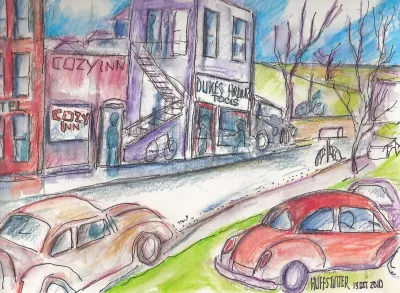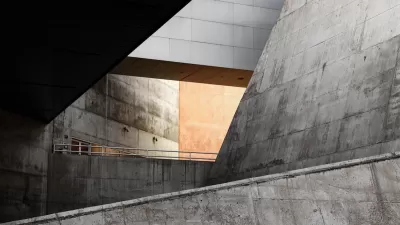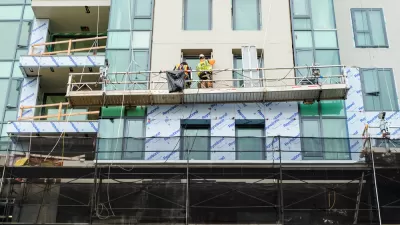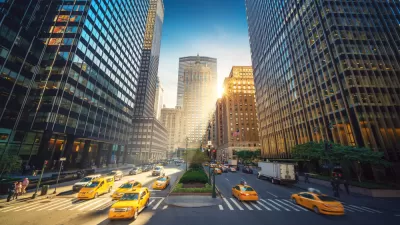Planning and art don't traditionally mix, but that's changing. Embedded at NYC's Department of Design and Construction, artist Mary Miss envisions public art as an infrastructural aid.

Long-time public artist Mary Miss serves as the first artist-in-residence at New York City’s Department of Design and Construction (DDC), with a mandate "to change the culture of an agency known for its sometimes difficult relationships with architects."
Jen Kinney writes, "In the past 30 years, just 337 percent-for-art projects have been installed in the city, while thousands of construction and infrastructure projects have been undertaken in that same time."
In her DDC position, as well as through her nonprofit City as Living Laboratory, Miss sees ways to integrate public art into cities' infrastructural needs. For example, in Milwaukee, she proposes to "light the water treatment plant's stack so that it glows blue most of the time, but turns red the night before it's forecasted to rain. Through education, residents will understand this as encouragement not to run their dishwashers or washing machines or take baths until the storm has passed."
"When it comes to integrating artists at DDC, Miss offers three potential pathways: Artists could be hired as liaisons between a construction project and local residents, before, during and after construction; they could be brought on as a member of the design team; or they could apply to DDC as fellows."
FULL STORY: How to Bring More Artists Into City Planning

What ‘The Brutalist’ Teaches Us About Modern Cities
How architecture and urban landscapes reflect the trauma and dysfunction of the post-war experience.

‘Complete Streets’ Webpage Deleted in Federal Purge
Basic resources and information on building bike lanes and sidewalks, formerly housed on the government’s Complete Streets website, are now gone.

The VW Bus is Back — Now as an Electric Minivan
Volkswagen’s ID. Buzz reimagines its iconic Bus as a fully electric minivan, blending retro design with modern technology, a 231-mile range, and practical versatility to offer a stylish yet functional EV for the future.

City Nature Challenge: Explore, Document, and Protect Urban Biodiversity
The City Nature Challenge is a global community science event where participants use the iNaturalist app to document urban biodiversity, contributing valuable data to support conservation and scientific research.

A Lone Voice for Climate: How The Wild Robot Stands Apart in Hollywood
Among this year’s Oscar-nominated films, only The Wild Robot passed the Climate Reality Check, a test measuring climate change representation in storytelling, highlighting the ongoing lack of climate awareness in mainstream Hollywood films.

Healing Through Parks: Altadena’s Path to Recovery After the Eaton Fire
In the wake of the Eaton Fire, Altadena is uniting to restore Loma Alta Park, creating a renewed space for recreation, community gathering, and resilience.
Urban Design for Planners 1: Software Tools
This six-course series explores essential urban design concepts using open source software and equips planners with the tools they need to participate fully in the urban design process.
Planning for Universal Design
Learn the tools for implementing Universal Design in planning regulations.
City of Albany
UCLA Lewis Center for Regional Policy Studies
Mpact (formerly Rail~Volution)
Chaddick Institute at DePaul University
City of Piedmont, CA
Great Falls Development Authority, Inc.
HUDs Office of Policy Development and Research





























